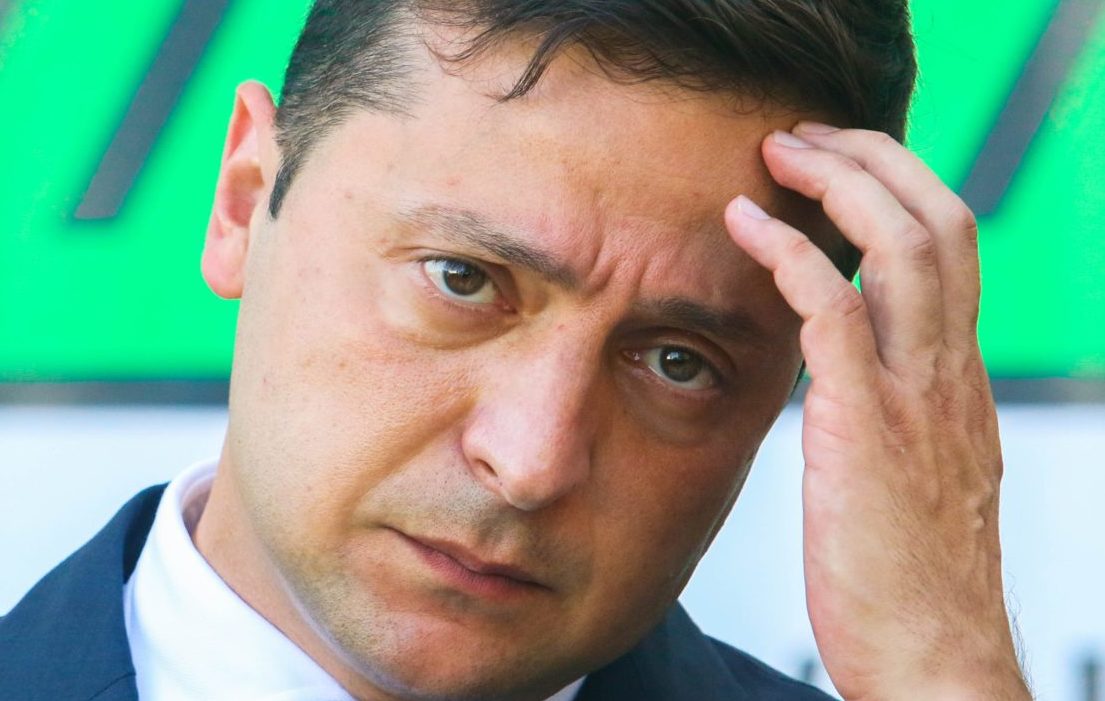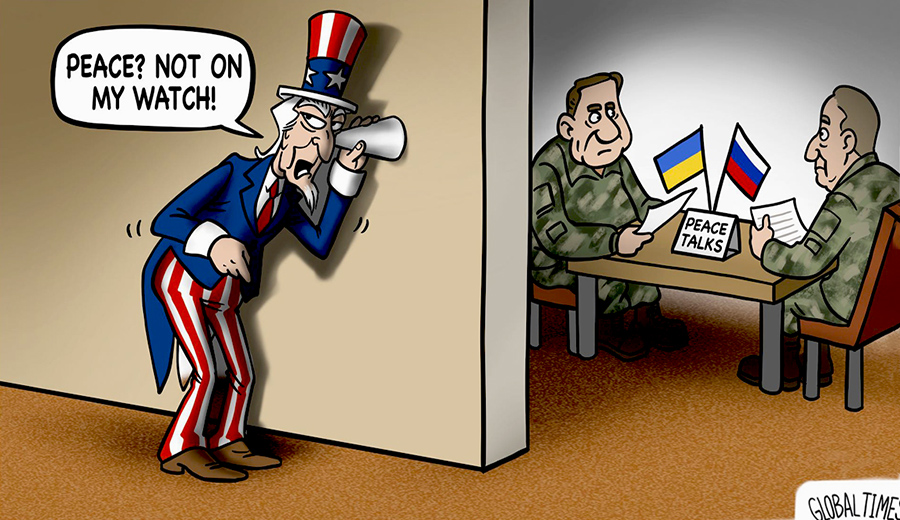According to John V Walsh (La Progressive 20 May22022), until recently a professor of of Physiology and Neuroscience at the University of Massachusetts, The New York Times is the leading propagandist for the United State’s role in the events unfolding in Ukraine. Its sudden shift on this proxy war signals recognition that it is going bad, that it is time to rethink and avoid getting stuck in the quagmire. Meanwhile, the United States military leader is talking to his Russian counterpart. Read on.
The New York Times has a job to do – and it has done that job spectacularly well over the past few months. The Times is a leader, in the opinion of this writer, the leader in spelling out the US narrative on the war in Ukraine, a tale designed to keep up morale, give the war a high moral purpose and justify the untold billions pouring from the taxpayers’ pockets into Joe Biden’s proxy war on Russia. Day in and day out in page after page of word and picture it has been instructing one and all, including politicians and lower level opinion shapers, exactly what to think about the war in Ukraine.
So, when the Times says that things are not going well for the US and its man in Kiev, Volodymyr Zelensky, it is a man bites dog kind of story. It tells us that some truths have gone from uncomfortable to undeniable. Such was nature of the page one story on May 11, headlined “Russians Hold Much of the East, Setbacks Aside.”

Photo by Oleh Dubyna/Shutterstock: Ukraine’s Volodymyr Zelensky is in trouble. His reaction after the U.S. Congress denied him the military support he sought
Even that anti-narrative headline softens the bitter truth. The first paragraph of the story fesses up more completely, stating, “Obscured in the daily fighting is the geographic reality that Russia has made gains on the ground.” Not “holding” ground but “gaining” ground. Not exactly a morale booster.
The Times goes on, “The Russian Defense Ministry said Tuesday that its forces in eastern Ukraine had advanced to the border between Donetsk and Luhansk, the two Russian-speaking provinces where Moscow-backed separatists have been fighting Ukraine’s army for eight years.”. Here it reminds us that the first shots in this war were not fired on February 24, as the narrative goes, but eight long years ago in the Donbas. It is a jolting reminder for those who base their support for the war on “who fired the first shot,” that their “moral” view has a considerable blind spot.
The Times continues: “…. the Donbas seizure, combined with the Russian invasion’s early success in seizing parts of southern Ukraine adjoining the Crimean Peninsula …. gives the Kremlin enormous leverage in any future negotiation to halt the conflict.”
It goes on: “And the Russians enjoy the added advantage of naval dominance in the Black Sea, the only maritime route for Ukrainian trade, which they have paralyzed with an embargo that could eventually starve Ukraine economically and is already contributing to a global grain shortage.” More bad news.
More, “Russia has all but achieved one of its primary objectives: seizing a land bridge connecting Russian territory to the Crimean Peninsula.” And, “The last stronghold of Ukrainian resistance in this area, at the Azovstal steel plant in Mariupol, has been whittled to a few hundred hungry troops now confined mostly to bunkers.” Ouch!
Finally, turning its attention to the economy, the Times states: “The war has “put Ukraine’s economy under enormous stress, with the heavy devastation of infrastructure and production capacities,” the bank said in an economic update. It estimated that 30 percent to 50 percent of Ukrainian businesses have shut down, 10 percent of the population has fled the country and a further 15 percent is displaced internally.” That is a grand total of 25% of the population displaced from their homes.
This sad tale of failure, misery and death is broken up by considerable verbiage, some anecdotes from the front and the testimony of Avril Haines, Director of National Intelligence, whose testimony is guarded but bleak. But read with thought, there is a big failure looming over the enterprise.
So, in a panic the US continues to throw mountains of cash at the problem, about $63 billion if one includes the recent infusion of about $40 million about to whistle through the Senate and already passed by the House with only 57 Nays, all Republican.

But why this abrupt shift in tone by the Times. Lax editorial oversight? This does not appear to be the case, because right on cue on the same day we are treated to an Opinion piece entitled: “America and Its Allies Want to Bleed Russia. They Really Shouldn’t.” It suggests that it is time for the U.S. to wave the white flag,
The piece concludes thus:
“But the longer the war, the worse the damage to Ukraine and the greater the risk of escalation. A decisive military result in eastern Ukraine may prove elusive. Yet the less dramatic outcome of a festering stalemate is hardly better. Indefinite protraction of the war, as in Syria, is too dangerous with nuclear-armed participants.
“Diplomatic efforts ought to be the centerpiece of a new Ukraine strategy. Instead, the war’s boundaries are being expanded and the war itself recast as a struggle between democracy and autocracy, in which the Donbas is the frontier of freedom. This is not just declamatory extravagance. It is reckless. The risks hardly need to be stated.”
It appears some in the Foreign Policy Elite and other precincts of the Deep State have seen the looming disaster for the proxy war on Russia being waged by Biden, Nuland, Blinken and the rest of the neocon cabal. The prospect of nuclear holocaust lying at the end of this road may be enough to rouse them from their Exceptionalist torpor. They seem to want to stop the train that they have set in motion before it runs off the cliff. It is not clear whether they will prevail. But it is clear that we need to drive those responsible for this dangerous debacle out of power – before it is too late.


Be the first to comment on "New York Times documents failure of U.S. in Ukrainemes shifts prowar narrative"